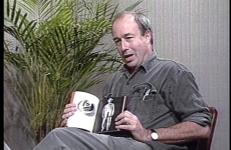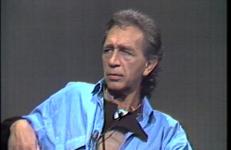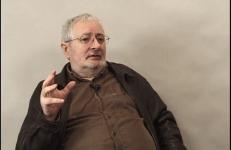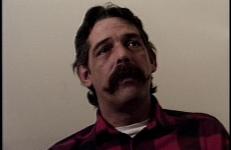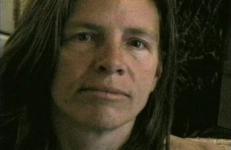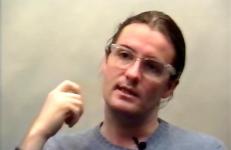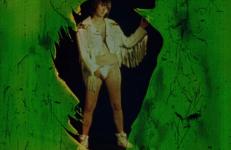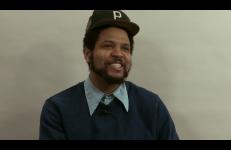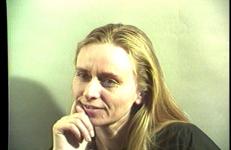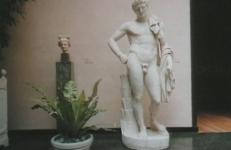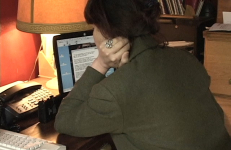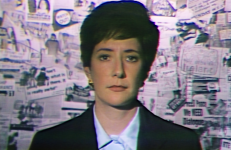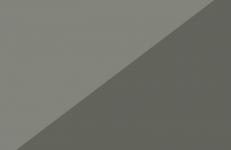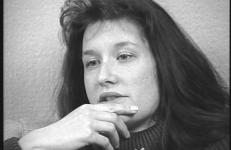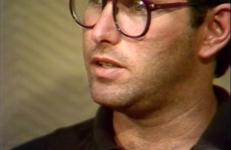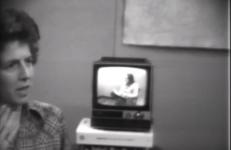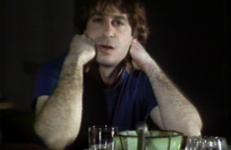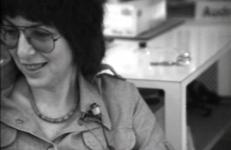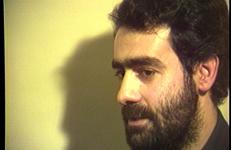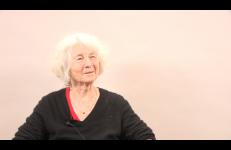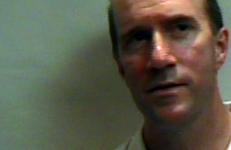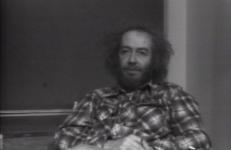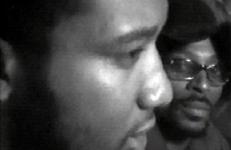Painter/mixed media artist David Dunlap creates installations and performances that draw from the notebooks he has kept since the mid-’70s—giving three-dimensional, public form to his intimate thoughts and diaries. He lives and works in Iowa City, where he is a professor of art at the University of Iowa.
Interview
Cherokee-American artist Jimmie Durham has worked in performance since the mid-’60s. In the ‘70s, he immersed himself in activism, working for Native American rights as part of the American Indian Movement. In the ‘80s, his focus returned to producing art in multiple forms—performance, poetry, and mixed-media visual works—that consider Native American identity and critique American domestic colonialism. He has also published numerous critical essays.
In this interview, political and social theorist, Terry Eagleton (b. 1943), shares stories of his Irish upbringing and British education, and sums up his current engagement with art theory, leftist politics, and spirituality under capitalism. With reference to Henry James, Frederic Jameson, Christopher Hitchens, and Richard Dawkins, among others, this interview spans a vast landscape of literature and social theory.
Felipe Ehrenberg is a prominent Mexican artist who has been actively producing interactive political art, installations, and murals for more than 30 years. Also a writer, Ehrenberg has run a small press in Mexico City and has published numerous articles for art journals in the United States.
Interview by Carol Becker.
This video is an unabashed fan letter to poet Eileen Myles. As in Laurie, my desire was to romanticize the poet, but not through her writing so much as through her reputation as the natural born child of the New York School and the Beats. I shot the movie as I imagined Robert Frank and Alfred Leslie shooting Pull My Daisy, a film that left an impression on me chiefly of the struggle between form and formlessness, plan and improvisation, sketch and story.
Berlin-based Danish artist Olafur Eliasson complicates and simulates perception through his installations, sculptures, and photographs. He has created disorienting artificial illuminations and reproduced natural phenomena such as clouds, glaciers and the sun through large-scale, high-tech installations.
Encounters I May Or May Not Have Had With Peter Berlin deals primarily with monumentality, narcissism and the ways in which our heroes are embedded into our identities, and manifested through the body. Through a variety of gestures, the pervasiveness of this practice is highlighted alongside its ultimate, inevitable failure. The viewer moves through various stages of anxiety, idolization and actual touchdown with 1970s gay sex icon Peter Berlin himself, capturing both the apparent and the hidden.
In this interview, African American filmmaker and DJ Ephraim Asili (b. 1979) discusses his upbringing, education, and creative process. Born and raised around the city limit of Philadelphia, Asili’s childhood and adolescence were imbued with hip hop music, Hollywood movies and television.
German curator Ute Eskildsen (b. 1947) was born in Itzehoe (Schleswig-Holstein). After studying photography and working as an assistant in a fashion and portrait studio, she went on to study photography and the history of photography at the Folkwang School of Portraiture in Essen. A fellow in Visual Communication at the Essen University, she served as assistant to Otto Steinert in the field of photo-history exhibitions.
Consisting of 13 brief spots, Experience: Perception, Interpretation, Illusion features works by artists included in a Pasadena Armory exhibition. Curator Noel Korten explains that the artists in the show have all reached mid-career and are now less concerned with expanding the boundaries of contemporary art than on reflecting back on culture through their own perspectives. Artists include Karen Carsen, John Outterbridge, Michael C.
In collaboration with art historian Dore Bowen, a video recording of her phone interview with Yoko Ono during which a discussion of John Cage and chance operations intervene. Shot in 2002, this document was released in 2007.
Broadcasters across Ireland and Britain have entered into a blackout strike. The workers are transmitting a programme bringing censored voices back onto the airwaves.
"In the late 1980s, as violence continues in the north of Ireland, censorship is increasingly being enforced on British and Irish television. In response, broadcasters have entered into a blackout strike, occupying several stations and transmitting a programme bringing censored voices back onto the airwaves."
Southern California visual artist Jud Fine seeks to promote democracy in art—the idea that anyone can be an artist. This video presents the artist and his work in a style that reflects the multi-layered dimensions of his artwork.
Karen Finley is well known for her confrontational monologues, often performed in clubs and bars, which exploit the stereotype of the hysterical woman to address the sexual and political taboos associated with femininity. Using a variety of unusual props, such as Jello, chocolate syrup, stuffed animals, and glitter, Finley provokes her audience into thinking about a range of repressions and contradictions in contemporary society. She gained mainstream attention when Congress questioned her NEA funding in the early 1990s.
Interview by Tom Jaremba.
Reverend Howard Finster was a preacher-turned-folk artist. He created Paradise Gardens Park & Museum, a product of all his murals, drawings, sculptures, and mosaics—and Summerville, Georgia’s largest tourist attraction. He began Paradise Gardens around 1961; in 1976 he responded to a vision to paint sacred art. As this video begins, Finster is painting with his hands in his studio. Finster then embarks on his first visit to New York City and comments upon his exhibition at Phyllis Kind Gallery. He spins rhythmic narratives that turn into miniature sermons.
Eric Fischl's early works were large-scale abstract paintings. While teaching in Nova Scotia, Fischl began to shift from abstraction to smaller, image-oriented paintings, beginning with narrative works that investigated a fisherman's family. By the time Fischl left Halifax the narrative element was gone, but the subject of family melodrama remained. In the '80s Fischl's large figurative paintings, aggressive in their confrontation with the viewer, began to receive attention.
Louise Fishman (b.1939) is an abstract painter who uses knives rather than brushes to apply her undiluted colors. Her complex compositions place architectural shapes within other shapes.
“Almost everything is covered in my paintings. I go through numerous changes in them. I used to think that I was losing a lot of images. More recently I discovered that I was travelling through a process where an image would come back not exactly as it had been before. My unconscious memory is alive,” she says in this interview with Kate Horsfield.
Featuring Vito Acconci, Richard Serra, Willoughby Sharp, Keith Sonnier, and William Wegman
Audrey Flack uses an airbrush to produce large photorealistic paintings and works from slides for her precision. She selects subjects with great personal significance that also represent fragments of contemporary American life. The three paintings discussed in detail in this tape are from the Vanitas series.
“Every still-life painter has her bag of tricks. You have your prop closet and just pull them out,” Flack says in this interview with Kate Horsfield. “One of the beauties of being an artist is that no one can tell me what to paint.”
Joan Fontcuberta was born in Barcelona in 1955. His work has been widely exhibited internationally. Fontcuberta uses photography as a conceptual medium, often testing the limits of the image’s credibility. Fauna (1987) and Sputnik (1997) take advantage of photography’s documentary quality to pose elaborate hoaxes. In recent work, Fontcuberta explores and criticizes the image and its proliferating sources with works such as Orogensis/Landscapes Without Memory (2002) and Googlegrams (2005).
The later 1950s and early 1960s saw the development and proliferation of radically new forms of dance driven by a desire to understand the essentiality of movement divorced from traditional, balletic and modern syntaxes. At the forefront of this new wave of performance was Simone Forti, an artist with a hand in both improvisational techniques and choreographed task-maneuvers. This interview details her exploration of each – with a particular focus on her earliest investigations into movement, owing to time spent under the study of Anna Halprin.
Hal Foster is Professor of Modern Art at Princeton University, and has written and edited numerous influential books on postmodernism, art, and culture. His books include Recodings: Art, Spectacle, Cultural Politics (1985); The Return of the Real: The Avant-Garde at the End of the Century (1996); and, as editor, The Anti-Aesthetic: Essays on Postmodern Culture (1983); Vision and Visuality (1988); and Richard Serra (2000).
Interview by David Raskin.
A historical interview originally recorded in 2001 and re-edited in 2008.
Richard Ross discusses his interest in photographing museums—their display of objects, frames, the entire context—in order to question our definitions of the museum. The video also covers his ongoing series of triptychs made using a child’s plastic camera, which Ross turns into “art historical soap operas” by playing off the interactions of the groupings.
Only available on the Fellows of Contemporary Art compilation.
In the 1960s and '70s, Hollis Frampton (1936-1984) emerged as one of the most important experimental filmmakers, creating structuralist works such as Zorns Lemma (1970), Poetic Justice (1972), and Nostalgia (1973).
The Videofreex conducted this interview with Fred Hampton, the Deputy Chairman of the Illinois chapter of the Black Panther Party, in October 1969, just over a month before he was killed by the Chicago police.




